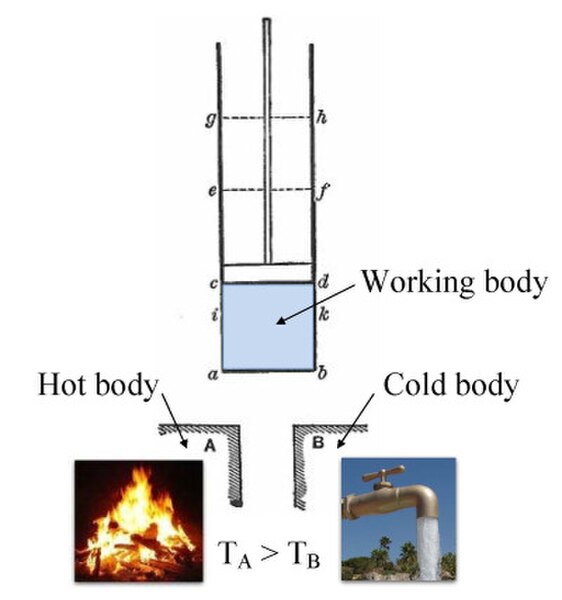Nicolas Léonard Sadi Carnot
Nicolas Léonard Sadi Carnot was a French mechanical engineer in the French Army, military scientist and physicist, often described as the "father of thermodynamics". He published only one book, the Reflections on the Motive Power of Fire, in which he expressed the first successful theory of the maximum efficiency of heat engines and laid the foundations of the new discipline: thermodynamics. Carnot's work attracted little attention during his lifetime, but it was later used by Rudolf Clausius and Lord Kelvin to formalize the second law of thermodynamics and define the concept of entropy. Driven by purely technical concerns, such as improving the performance of the steam engine, Sadi Carnot's theoretical work laid important foundations for modern science as well as technologies such as the automobile and jet engine.
Nicolas Léonard Sadi Carnot in 1813 aged 17 in the traditional uniform of a student of the École Polytechnique
1890 copy of "Reflections on the Motive Power of Heat"
Title page of a 1890 copy of "Reflections on the Motive Power of Heat"
First page of the table of contents for a 1890 copy of "Reflections on the Motive Power of Heat"
Thermodynamics is a branch of physics that deals with heat, work, and temperature, and their relation to energy, entropy, and the physical properties of matter and radiation. The behavior of these quantities is governed by the four laws of thermodynamics, which convey a quantitative description using measurable macroscopic physical quantities, but may be explained in terms of microscopic constituents by statistical mechanics. Thermodynamics applies to a wide variety of topics in science and engineering, especially physical chemistry, biochemistry, chemical engineering and mechanical engineering, but also in other complex fields such as meteorology.
Annotated color version of the original 1824 Carnot heat engine showing the hot body (boiler), working body (system, steam), and cold body (water), the letters labeled according to the stopping points in Carnot cycle
Opening a bottle of sparkling wine (high-speed photography). The sudden drop of pressure causes a huge drop of temperature. The moisture in the air freezes, creating a smoke of tiny ice crystals.






